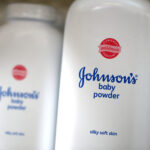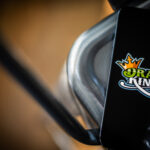James River Group Inc. in Chapel Hill, N.C. reported a net loss of $9.5 million for the third quarter of 2005 compared to net income of $3.0 million for the third quarter of 2004. The net loss for the third
quarter of 2005 included a $16.2 million after-tax loss from Hurricane Katrina, net of reinsurance and including reinsurance reinstatements, and a $1.3 million after-tax loss from Hurricane Rita.
At the same time, the third quarter of 2005 benefited from favorable development on prior accident year reserves for the excess and surplus casualty business of $1.0 million after-tax.
Net loss for the first nine months of 2005 was $190,000 compared to net income of $5.5 million for the first nine months of 2004.
Direct written premiums for the first nine months of 2005 increased 80.3 percent to $166.1 million from $92.1 million for the first nine months of 2004. The combined ratio for the first nine months of 2005 was 107.1 percent compared to 93.0 for the same period in 2004, with losses from Hurricane Katrina driving the higher combined ratio in 2005. The expense ratio for the first nine months of 2005 was 23.2 percent compared to 28.1 for the first nine months of 2004.
Direct written premiums for the third quarter of 2005 were $61.3 million, a 59.1 percent increase from $38.5 million for the third quarter of 2004. The combined ratio for the third quarter of 2005 was
172.4 percent compared to 90.4 percent for the same period in 2004.
The combined ratio for the third quarter of 2005 was increased by losses from Hurricane Katrina, which contributed to a loss ratio of
145.9 percent for the quarter compared to 65.5 percent for the third quarter of 2004. The expense ratio for the third quarter of 2005 was 26.6 percent compared to 24.9 percent for the third quarter of 2004. The 2005 third quarter expense ratio includes 1.8 percent from the negative impact of accounting for Hurricane Katrina and 2.4 percent for the cost of a workers’ compensation guaranty fund assessment.
J. Adam Abram, president and chief executive officer, acknowledged the hurricane difficulties but pointed to premium growth as encouraging.
“We are disappointed that Hurricane Katrina had such a dramatic adverse impact on our third-quarter operating results. However, we are quite encouraged by our strong premium growth in the quarter. We also note the 57.5 percent growth in direct written premiums in our excess and surplus casualty business and the 303 percent increase in direct written premiums in our workers’ compensation business for the first nine months of 2005 compared to the same period last year. Pricing for our casualty business remains attractive, and we continue to believe that we have significant opportunities for profitable growth,” Abram commented.
He said the company has established appropriate reserves and does not expect any additional claims from Katrina. He also said that the company escaped the most recent storm, Wilma.
The experience of the third quarter has prompted the company to adjust its property underwriting practices so that it is now using “more conservative assumptions regarding how much reinsurance to purchase” in order to reduce its exposure to future hurricane related losses, according to Abram.
He said the company expects to have a combined ratio of less than 100 percent for 2005, and expects growth in direct written premiums to be at the high end of the 55 percent to 65 percent range. For 2006, he anticipates an annual return on equity of at least 15 percent, a combined ratio of between 80 percent and 90 percent and 20 percent to 30 percent growth in gross written premiums.
Was this article valuable?
Here are more articles you may enjoy.

 J&J, Kenvue Told to Pay $45 Million to Baby Powder User’s Family
J&J, Kenvue Told to Pay $45 Million to Baby Powder User’s Family  Zurich, Philadelphia, Others Ordered to Pay $345M to Cover Abuse Charges at Georgia School
Zurich, Philadelphia, Others Ordered to Pay $345M to Cover Abuse Charges at Georgia School  Poll: Consumers OK with AI in P/C Insurance, but Not So Much for Claims and Underwriting
Poll: Consumers OK with AI in P/C Insurance, but Not So Much for Claims and Underwriting  DraftKings Sued Over ‘Risk-Free’ Bets That Were Anything But
DraftKings Sued Over ‘Risk-Free’ Bets That Were Anything But 